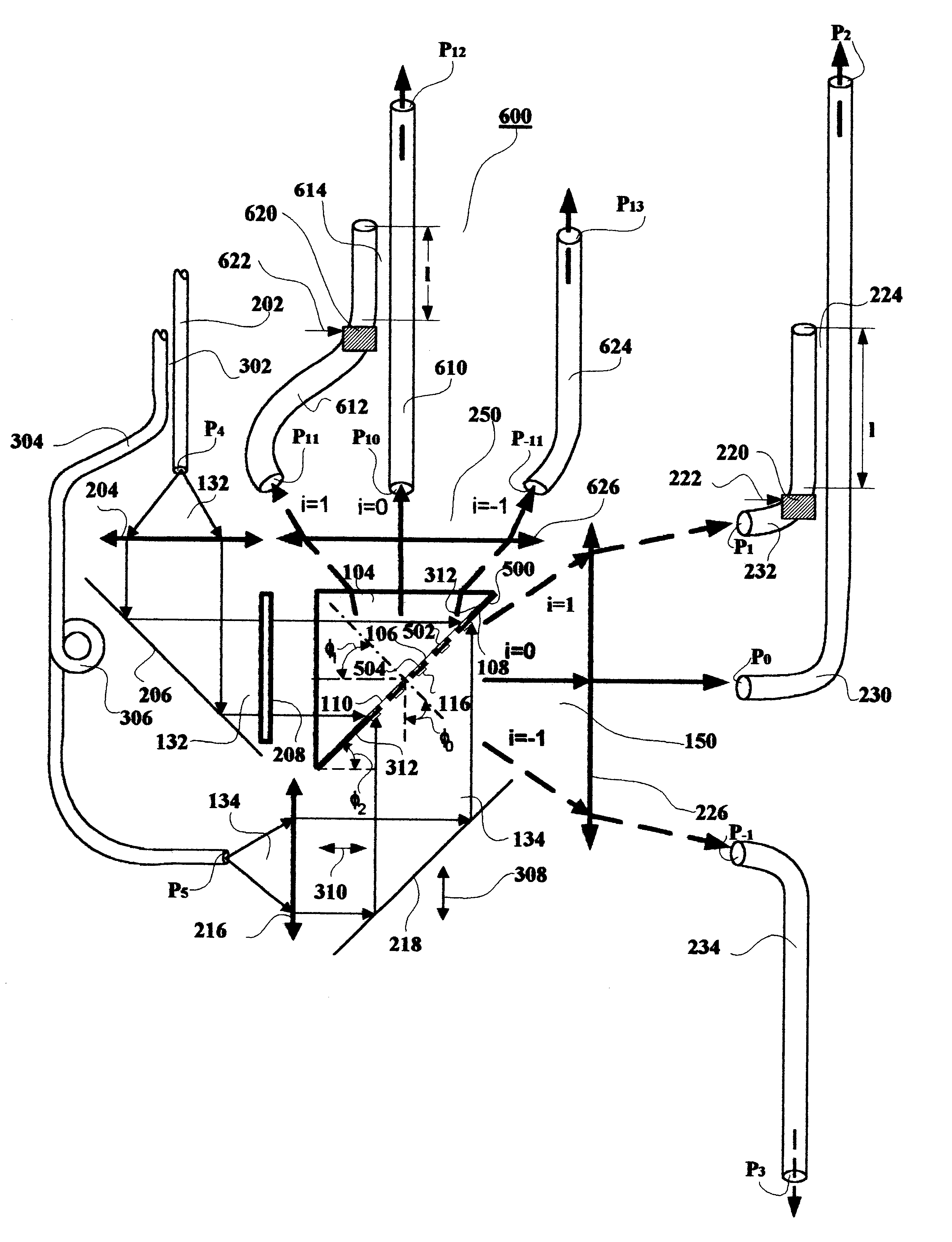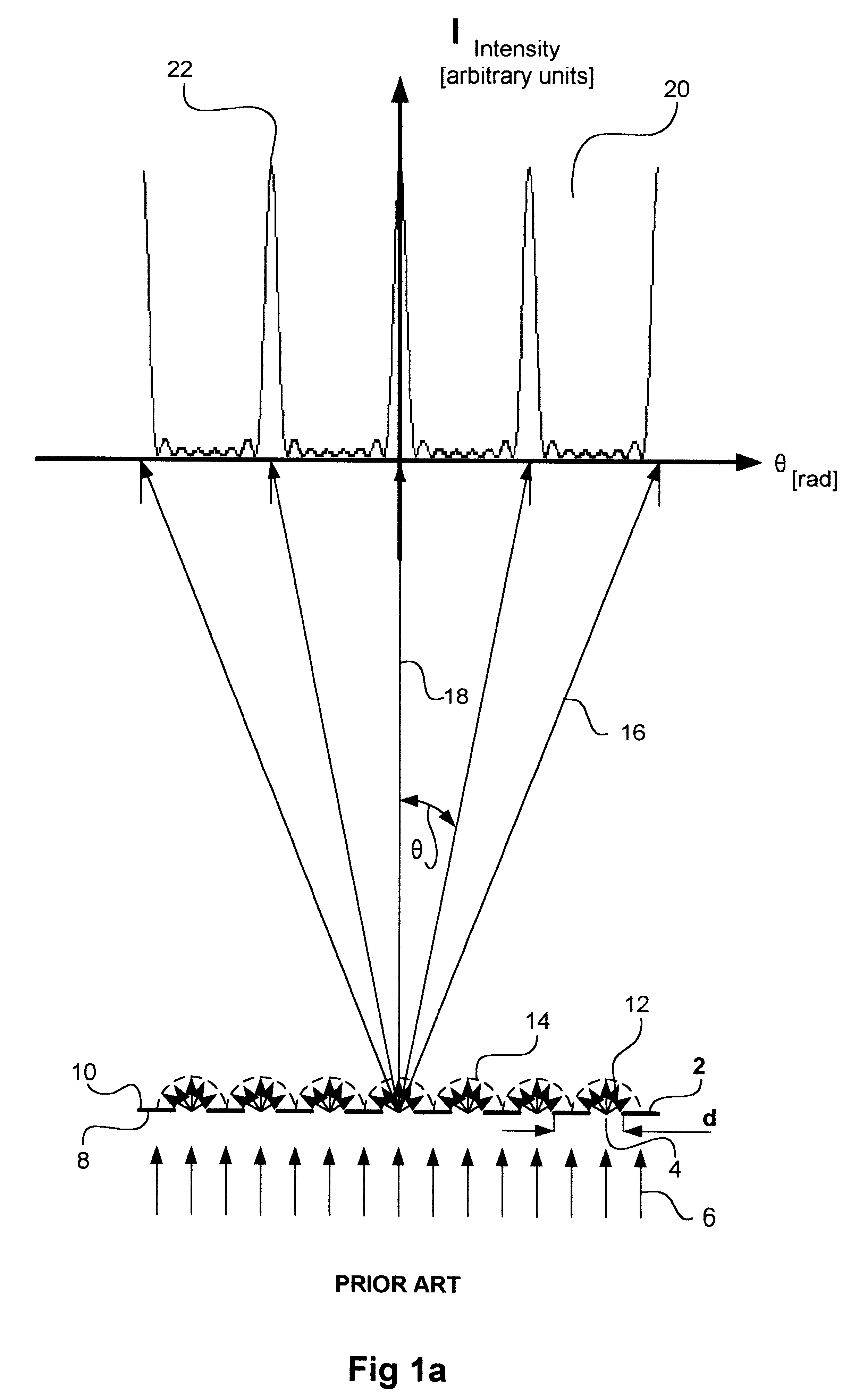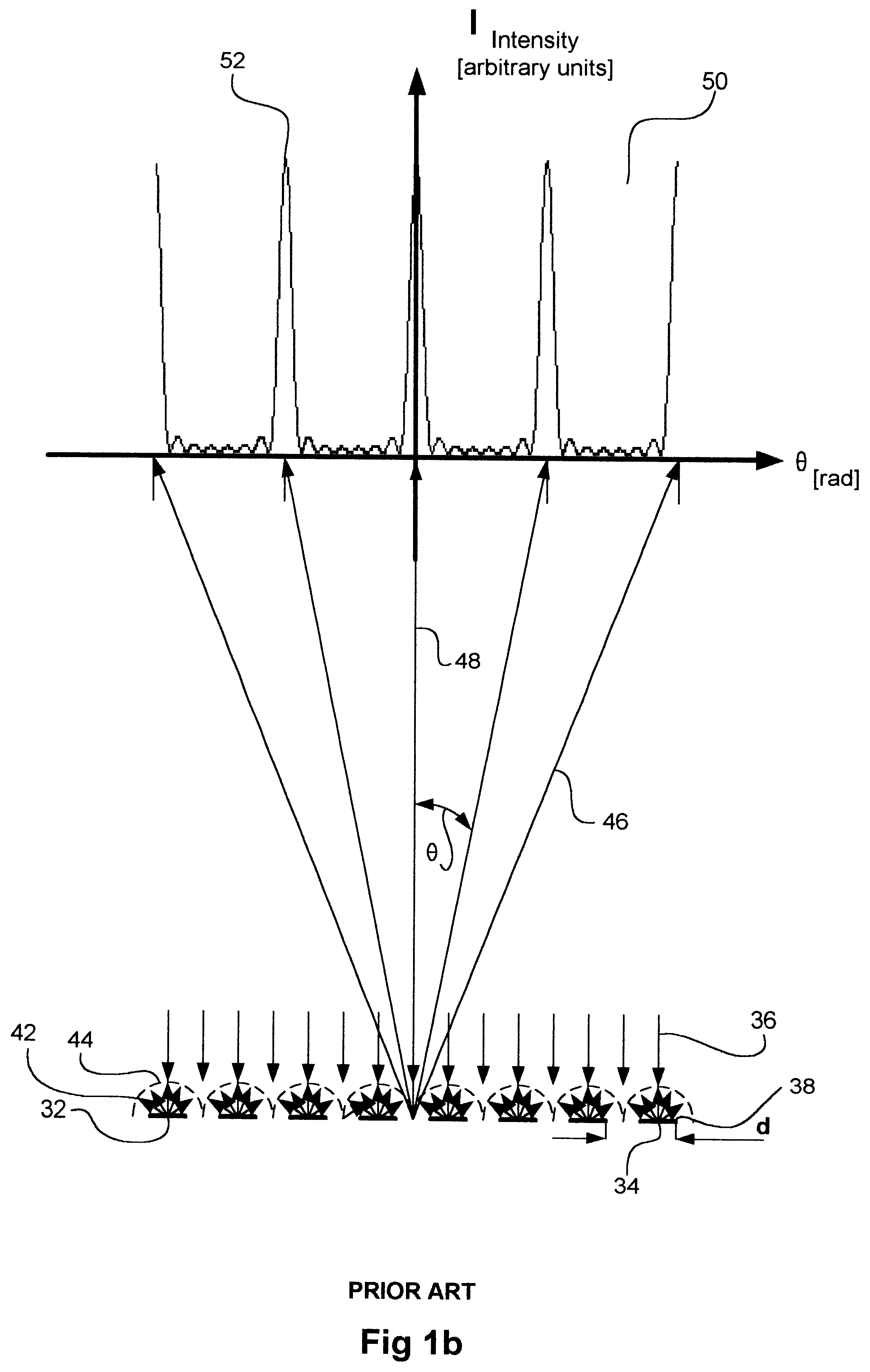All optical narrow pulse generator and switch for dense time division multiplexing and code division multiplexing
a technology of code division multiplexing and generator, applied in the field of optical communication, can solve the problems of optical network bottlenecks, limited capability of optical modulators to produce optical pulses, and limited capability of electronic switches
- Summary
- Abstract
- Description
- Claims
- Application Information
AI Technical Summary
Benefits of technology
Problems solved by technology
Method used
Image
Examples
Embodiment Construction
FIG. 1a--Prior Art--Transmitting Grating
FIGS. 1a and 1b illustrate the optical operational principle of prior-art transmitting and reflecting gratings, respectively. I provide FIGS. 1a and 1b to assist in understanding the present invention.
FIG. 1a shows a transmitting grating 2 with openings 4 with pitch d. Grating 2 receives planar radiation waves 6 on its side 8. Only part of the radiation of waves 6 is transmitted, by openings 4, to the other side 10 of grating 2. Radiation 12 exits from openings 4 and has a spherical front wave (diffraction effect) and its intensity distributed isotropically over half spheres 14 along which it propagates.
The radiation of propagating spheres 14 interfere with each other to create constructive and distractive interference. Arrows 16 schematically illustrate the directions along which the constructive interferences exist. The directions of arrows 16 are indicated by angles .theta., measured in radians, with respect to the axis of symmetry 18 of gr...
PUM
| Property | Measurement | Unit |
|---|---|---|
| wavelength | aaaaa | aaaaa |
| optical lengths | aaaaa | aaaaa |
| time widths | aaaaa | aaaaa |
Abstract
Description
Claims
Application Information
 Login to View More
Login to View More - R&D
- Intellectual Property
- Life Sciences
- Materials
- Tech Scout
- Unparalleled Data Quality
- Higher Quality Content
- 60% Fewer Hallucinations
Browse by: Latest US Patents, China's latest patents, Technical Efficacy Thesaurus, Application Domain, Technology Topic, Popular Technical Reports.
© 2025 PatSnap. All rights reserved.Legal|Privacy policy|Modern Slavery Act Transparency Statement|Sitemap|About US| Contact US: help@patsnap.com



